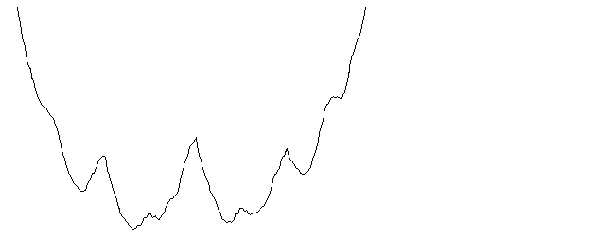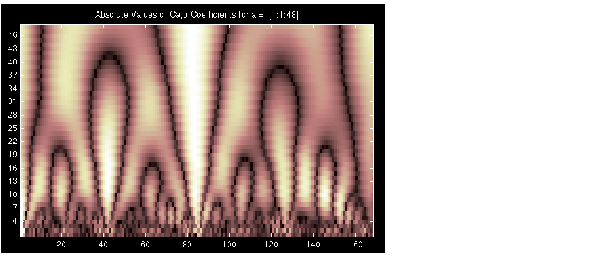

| Wavelet Toolbox |   |
The Scale of Nature
It's important to understand that the fact that wavelet analysis does not produce a time-frequency view of a signal is not a weakness, but a strength of the technique.
Not only is time-scale a different way to view data, it is a very natural way to view data deriving from a great number of natural phenomena.
Consider a lunar landscape, whose ragged surface (simulated below) is a result of centuries of bombardment by meteorites whose sizes range from gigantic boulders to dust specks.
If we think of this surface in cross section as a one-dimensional signal, then it is reasonable to think of the signal as having components of different scales -- large features carved by the impacts of large meteorites, and finer features abraded by small meteorites. 
Here is a case where thinking in terms of scale makes much more sense than thinking in terms of frequency. Inspection of the CWT coefficients plot for this signal reveals patterns among scales and shows the signal's possibly fractal nature.
Even though this signal is artificial, many natural phenomena -- from the intricate branching of blood vessels and trees, to the jagged surfaces of mountains and fractured metals -- lend themselves to an analysis of scale.
 | Scale and Frequency | What's Continuous About the Continuous Wavelet Transform? |  |
© 1994-2005 The MathWorks, Inc.